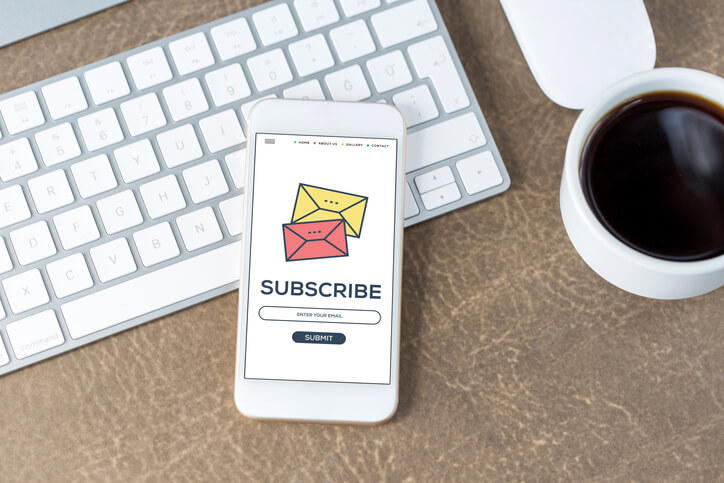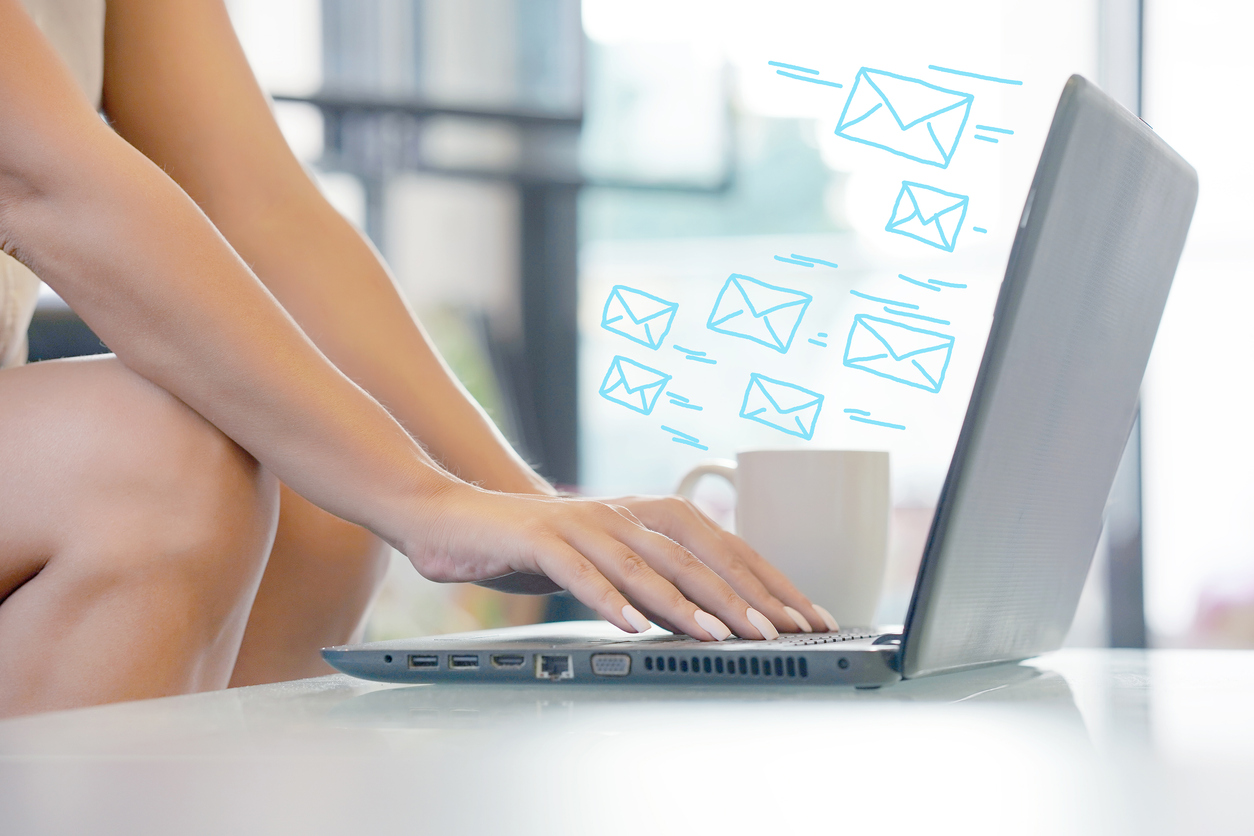Email remains one of the most robust and reliable marketing channels. However, with more than 306 billion emails sent and received on a daily basis, making your emails stand out is an absolute imperative.
That’s where email personalization comes in. Historically, marketers added a recipient’s first name into a generic email blast and it was “personalized.” For a time, this was revolutionary. By addressing a subscriber directly, it felt like the brand was speaking to the individual, rather than a faceless crowd. There was something almost magical about opening an email to see your name in the subject line or the greeting.
Fast forward to today and the novelty of seeing your name in an email subject line has waned, not because it’s ineffective, but because consumers simply want more.
The Power of Email Personalization
True personalization is comparable to a brand having a one-on-one conversation with a subscriber. It’s about ensuring the content of the email resonates with the recipient’s past interactions, preferences, and behaviors.
It’s about showing the subscriber that your brand doesn’t just know their name but also understands their needs, challenges, and desires.
This kind of personalization can’t be achieved by just skimming the surface. It requires digging deep into data, understanding consumer behavior, and crafting messages that are not just personalized but also relevant and timely.
Research has consistently shown that personalized emails can lead to significantly higher transaction rates and more engaged subscribers. This makes sense. After all, wouldn’t you be more inclined to engage with content specifically tailored to your interests?
Email Personalization By The Numbers
Here are some stats on email personalization that showcase the power a personalized email has – and also the repercussions when an email is NOT personalized:
- 59% of people say that email marketing influences their buying decisions.
- 52% of consumers say they’ll go somewhere else to find what they’re looking for if an email is not personalized.
- Emails with a personalized subject line are 26% more likely to be opened.
- Personalized emails produce six times more transactions than non-personalized emails.
8 Ways to Drive Engagement with Email Personalization
Here are 8 ways to use personalization in your email campaign strategies:
1. Demographic Data
This foundational data set includes information such as age, gender, education, and occupation.
For example, a furniture retailer may personalize emails to families identified as having children. The retailer can send emails showcasing child-friendly furniture items like bunk beds, kids’ study desks, or playroom storage solutions.
2. Geographical Location
Knowing where your subscriber resides can be invaluable. Send weather-specific offers, promote local events, or adjust your email send times based on time zones.
An online clothing retailer may send subscribers located in Miami emails highlighting their new collection of lightweight summer dresses and breathable footwear and for subscribers in Chicago, which might be experiencing a chilly season, the focus shifts to cozy winter wear promotions, featuring jackets, scarves, and boots.
3. Purchase History
Brands can hyper-personalize email outreach by analyzing what a subscriber has bought in the past to tailor future recommendations. For instance, if a customer recently purchased a laptop, they might be interested in laptop accessories next.
These types of emails are especially powerful, with 75% of consumers reporting that they are more likely to buy from a company that knows their purchase history and uses it to recommend other products they may like.
4. Shopping Cart Abandonment
It’s common for online shoppers to leave items in their cart without purchasing. In fact, an average of 69% of online carts are being abandoned by users. Sending a personalized reminder or offering a special discount can be the nudge they need to complete the transaction.
Abandoned cart emails can be highly successful. According to research, 60% of shoppers returned to complete their purchase after receiving one. Sending three abandoned cart emails leads to 69% more orders than through a single email.
5. Welcome Emails for New Subscribers
More than 80% of consumers reported that they will open a welcome email. Welcome emails serve as your brand’s digital handshake, often making the first official impression in a subscriber’s inbox, so make this impression count.
Send the welcome email promptly after a subscriber joins your list. This immediate engagement capitalizes on their fresh interest in your brand. Be sure to also offer a thank you freebie or discount for joining. Rewarding subscribers for signing up can foster goodwill and encourage an initial purchase or interaction.
6. Re-engagement Emails
Done right, re-engagement emails can breathe new life into dormant subscriber relationships, revitalizing interest and loyalty.
Address subscribers by name and remind them of their last interaction with your brand. Highlight what they’ve missed since their last engagement. Entice inactive subscribers with exclusive deals, discounts, or content for re-engaging. Also, make your intent clear with subject lines like “We Miss You!” or “It’s Been a While, Let’s Catch Up!”
7. Milestone Emails Such as Celebrating Anniversaries or Birthdays
Milestone emails are moments of celebration, recognition, and personal touchpoints that resonate deeply with recipients. These emails, whether celebrating anniversaries, birthdays, or other significant events, have a unique power to forge and strengthen the bond between your brand and your customers while ramping up your sales.
Birthday emails have a 481% higher transaction rate than promotional emails and generate 342% higher revenue per email than promotional emails!
Milestone emails convey one key message: “We remember, and we care.” By acknowledging personal events like birthdays or the anniversary of a customer’s association with your brand, you are demonstrating attention to detail and genuine customer appreciation. Use these opportunities to offer special discounts, bonus points, or exclusive content.
8. Loyalty Program Data
Over 83% of consumers say belonging to a loyalty program influences their decision to buy again from a brand. Additionally, 75% of consumers in loyalty programs will buy more products from the companies they partner with.
Loyalty programs are treasure troves of data, offering deep insights into your customers’ behavior, preferences, and purchasing patterns. Coupling these insights with email marketing can drive deep personalization and engagement.
Use your loyalty program data to personalize offers based on how many points your customers have, their membership tier, or their past redemption history.
Use purchase history to recommend complementary products. For instance, if a loyalty member frequently purchases skincare products, spotlight new arrivals or bestsellers in that category in your emails.
Recognize and reward members based on their loyalty tier. Send exclusive discounts, early access, or special gifts to high-tier members, reinforcing their value to your brand.
Conclusion
Going beyond using just the first name in email personalization can lead to richer subscriber relationships, higher engagement rates, and an overall more effective email marketing strategy. In a world filled with generic, mass-produced content, personalization stands out. Make sure your emails aren’t just seen – but remembered.




